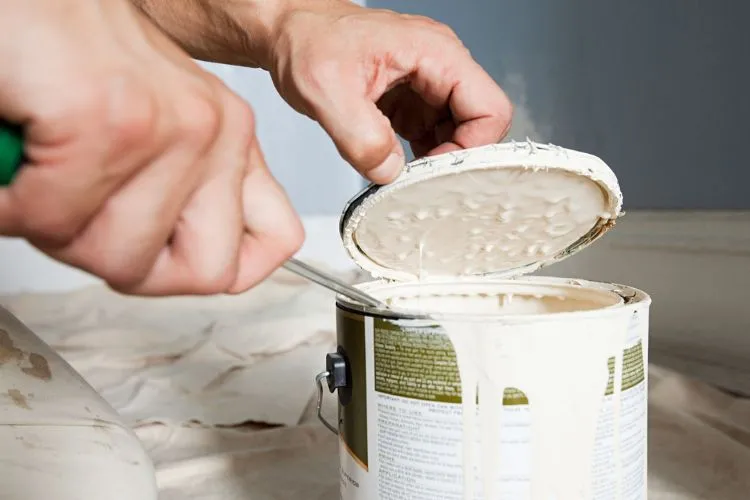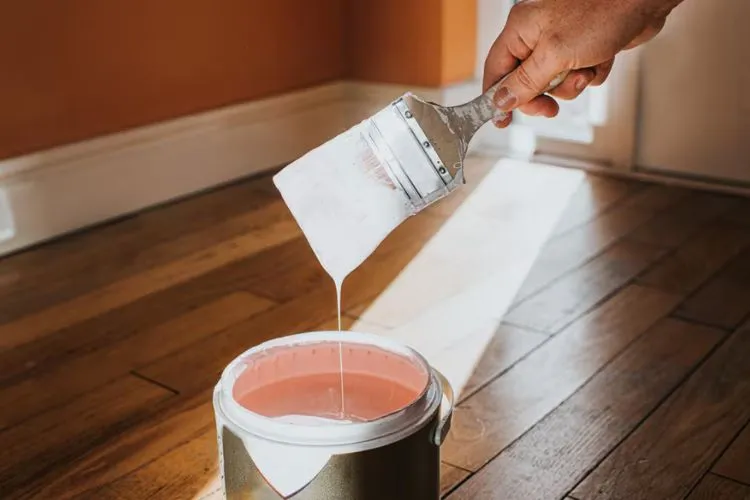Acrylic paint, with its versatility and ease of use, has emerged as a fundamental medium in the artistic world. This guide delves into the aspects of acrylic paint, its longevity, and how best to preserve its quality over time. So, does acrylic paint expire?
Providing a wealth of information, it aims to equip artists with the knowledge to extend the life of their acrylic paints, ensuring the vibrancy and integrity of their artwork for years to come.

Composition and Properties of Acrylic Paint
Composition
Acrylic paint comprises pigments suspended in an acrylic polymer emulsion. Added to this are various chemicals that adjust the paint’s drying time, texture, and durability.
This mix gives acrylic paint its unique properties, allowing for adjustments in glossiness or matte finishes according to the artist’s needs.
Properties
The quick-drying characteristic of acrylic paint is prized among artists, facilitating rapid layering in art projects. Once dry, it creates a flexible, water-resistant film, making it suitable for use on a vast array of surfaces and in different conditions.
Does Acrylic Paint Expire?
Understanding the Basics
Acrylic paint doesn’t “expire” in the same way food products do. However, its quality can degrade over time. This degradation can affect the paint’s color, texture, and overall usability, impacting the artist’s work.
Recognizing Deterioration
Signs that acrylic paint is past its best include separation of the pigment from the emulsion, noticeable when squeezed out of the tube. Other indicators are thickening, clumping, an off smell, difficulty in mixing, and at worse, mold development due to moisture.
Influences on the Lifespan of Acrylic Paints

Storage Conditions
The shelf life of acrylic paint is heavily influenced by storage. Ideally, paints should be kept in a cool, dry location away from sunlight. Temperature fluctuations and humidity can degrade the paint quicker.
Container Integrity
Air exposure can cause the paint to thicken through drying. It’s crucial to ensure containers, particularly tubes, are tightly closed post-use. Paints in improperly sealed containers are more prone to drying out.
Paint Quality
There’s a distinction between professional-grade and student-grade acrylic paints. The former typically has a longer shelf life due to higher pigment concentrations and fewer fillers, ensuring a better-preserving product.
Strategies for Extending Paint Longevity
Effective Storage Methods
Proper storage is key to preserving acrylic paint. Keeping paints at steady temperatures and away from places with extreme environmental changes can prevent premature degradation. Ensuring closures are tightly secured prevents unnecessary drying.
Restoration Techniques
Thickened acrylic paint might not be a lost cause. Adding a professional acrylic medium can sometimes restore its consistency, though one should discard the paint if it smells bad or shows mold.
Best Usage Practices
During painting, keeping the paint tubes or bottles closed when not in use will minimize drying. Additionally, tools like palette moisturizers can help keep the paint usable for longer periods.
You may also read: Is Acrylic Paint Toxic? | Is Acrylic Paint Flammable or Combustible?
Expert Practices and Misconceptions

Professional Advice
Following manufacturer guidelines for paint care and storage can profoundly affect paint shelf life. Experts often suggest splitting larger amounts of paint into smaller containers to limit air exposure, preserving the paint’s quality.
Addressing Myths
A common misunderstanding is that once acrylic paint dries, it becomes useless. The truth is, the right medium can often reactivate dried paint for use in various techniques, debunking the myth of its finality.
Pro Tips for Acrylic Paint Management
- Test old paint on a sample surface before applying it to significant projects.
- Buy paint in volumes that match your usage to minimize waste.
- Keeping an inventory with dates helps in rotating stocks, using older ones first.
This exhaustive guide is more than just about paint preservation — it emphasizes a thoughtful approach to art materials and their impact on artistic quality. With this knowledge, artists can confidently navigate the complexities of acrylic paint, ensuring their artwork remains bright and enduring for years to come.
Health and Safety Considerations
Understanding the Toxicity Levels
While most acrylic paints are non-toxic, handling older or degraded paints requires caution as chemical changes may increase hazardous components. It’s critical to understand potential risks and employ safety practices accordingly.
Ventilation and Protective Gear
Proper ventilation is crucial in environments where acrylic paints are used intensively. Wearing protective gear, such as gloves and masks, protects against inhaling fumes or contact with potentially irritating substances, ensuring safety in professional artistic settings.
Case Studies and Expert Insights

Real-Life Experiences
Artists creatively counteract acrylic paint issues, employing tactics like repurposing tighter-seal vessels for long-term storage or integrating hardened paint fragments for texture in new pieces. These inventive solutions underscore adaptability and conservation in artistic processes.
Q&A with Professional Artists and Manufacturers
Engagements with professionals reveal key strategies, such as the use of specific additives to preserve paint viability. Dialogues with manufacturers offer tailored advice on maintaining and extending the life of acrylic paints, assuring the consistent quality of art materials.
Frequently Asked Questions (FAQs)
How long can an unopened bottle of acrylic paint last?
Typically, if unopened and stored under proper conditions, acrylic paint can last up to 5-10 years.
Can expired acrylic paint be harmful to use?
While not harmful, expired paint may not perform well and could compromise the quality of your artwork.
What is the best way to dispose of old or unusable acrylic paint?
It should be disposed of according to local regulations concerning chemicals and paint products.
How does the shelf life of acrylic paint compare to oil paints and watercolors?
Acrylics have a shorter shelf life than oil paints but are comparable to watercolors in terms of durability when properly stored.
Can I use dried-out acrylic paint for any other artistic purposes?
Dried-out acrylic paints can sometimes be used as dry pigments or incorporated into mixed media artwork.
Conclusion:
Even though acrylic paints don’t “expire” in the conventional sense, being aware of their properties, changes with age, and how to extend their usability allows artists to keep their supplies in prime condition.
Proper storage, attentive use, and leveraging restoration techniques when possible can ensure that acrylic paints remain vibrant and ready for artistic endeavors.

Meet Isabella Anderson, your acrylic painting mentor with over a decade of brush-wielding mastery. Dive into the colorful world of acrylics with her expert guidance, featured exclusively on ‘Acrylic Authority.’ Unleash your inner artist and explore the limitless possibilities of this versatile medium alongside a true acrylic aficionado.
